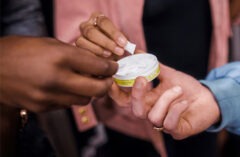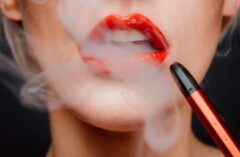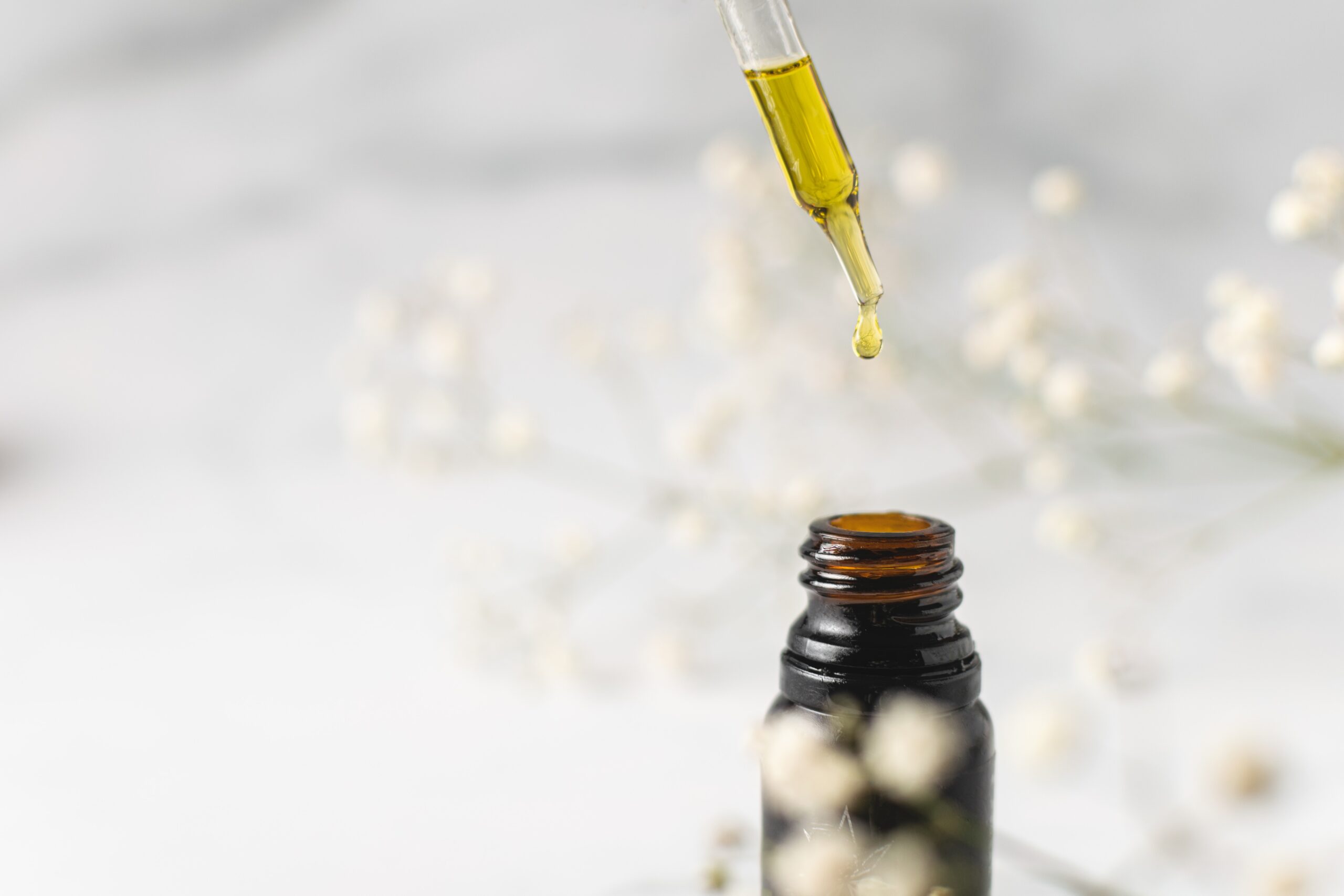I read something to this effect recently. It was included in a study of the use of hallucinogenic plants among shamanic cultures (like those in the Amazon). The author touched on the neurotransmitter acetylcholine.
In certain indigenous cultures, tobacco is considered a remedy (the Ashaninca word for “healer,” or “shaman,” is sheripiari – literally, “the person who uses tobacco) – while, in America, it has been directly implicated in more than 25 serious illnesses. Meanwhile, most authorities on the matter haven’t witnessed or heard of a single case of cancer developing among these shaman. And these people consume massive quantities of it, sometimes swallowing it whole. The variety used by these cultures even contains up to 18% nicotine, whereas Virginia-type tobacco contains .5-2% in the United States and Europe.
Now, there are fundamental differences between the shamanic use of tobacco and the consumption of industrial cigarettes. Amazonian tobacco is grown without chemical fertilizers or pesticides and contains none of the ingredients added to cigarettes, such as aluminum oxide, potassium nitrate, ammonium phosphate, polyvinyl acetate, and a hundred or so others, which make up approximately 10 percent of the smoke-able material. During combustion, a cigarette emits some 4,000 substances, most of which are toxic. Some of these substances are even radioactive, making cigarettes the largest single source of radiation in the daily life of an average smoker. According to one study, the average smoker absorbs the equivalent of the radiation dosages from 250 chest x-rays per year. None of this applies to the organically grown, natural variety used by the shaman.
Oh yeah, and when taken in mass amounts, the shaman claim they are able to “communicate with the spirits!”.
WHAT IS NICOTINE?
Nicotine is a nitrogen-containing chemical – an alkaloid, which is made by several types of plants, including the tobacco plant. Nicotine is also produced synthetically. Nicotiana tabacum, the type of nicotine found in tobacco plants, comes from the nightshade family. Red peppers, eggplant, tomatoes and potatoes are examples of the nightshade family.
Pharmacologic effects – when humans, mammals and most other types of animals are exposed to nicotine, it increases their heart rate, heart muscle oxygen consumption rate, and heart stroke volume – these are known as pharmacologic effects.
Psychodynamic effects – the consumption of nicotine is also linked to raised alertness, euphoria, and a sensation of being relaxed.
Addictive properties – nicotine is highly addictive. People who regularly consume nicotine and then suddenly stop experience withdrawal symptoms, which may include cravings, a sense of emptiness, anxiety, depression, moodiness, irritability, and inattentiveness. The American Heart Association says that nicotine (from smoking tobacco) is one of the hardest substances to quit.
According to a report published by the Massachusetts Dept of Public Health, tobacco companies steadily increased the nicotine content of their cigarettes from 1998 to 2004, by approximately 10%. The higher the nicotine dose in each cigarette, the harder it is for the regular smoker to quit. The Department accused the tobacco companies of deliberately making their customers more addicted, so that they could secure sales.
Nicotine in tobacco brings illness and death to millions of people. Yet nicotine in its pure form has the potential to be a valuable nutraceutical agent. Some of the positive effects include; enhancement of performance, and protection against; Parkinson’s disease, Tourette’s disease, Alzheimers disease, ulcerative colitis and sleep apnea. The reliability of these effects varies greatly but justifies the search for more therapeutic applications for this interesting compound.
So, you ask, is it ok for me to use nicotine or not? That is something only you can answer.
My question to you is… Are we repeating the same mistakes that we made with cigarettes by allowing chemicals and pesticides into our system through e cigarettes? It appears that the pesticides used on our tobacco plants, and the chemicals used to keep costs down, and possibly even keep us addicted AGAIN should be of concern. Does the nicotine in the liquid you vape even come from the US? Is the labeling on the strength something you can trust?
I would also like to address the misconception that “certain methods” of extracting the nicotine from tobacco plants get rid of the chemicals and pesticides. This is just not true. Here is a direct quote from one of the herbalists that I work with.
“Regarding the Chemical removal. Extracting removes some or all chemicals and adulterants from the Mark and puts them into the extracted material. So if the source material is contaminated or has an adulterant or a toxin, this material WILL end up in the extract unless the extract has a way to chemically strip and bond that specific material out. With that said, this is also a toxic approach as you usually need a toxin to attach a toxin. Which means you will still have a toxin in the finished extract. “
Last, but certainly not least, I would like to talk about the practice of selling nicotine to the general public. In doing some of my research I came across e cigarette companies that are offering nicotine for sale in up to 100 mg strengths to the general public. Are you kidding me? While we are being attacked from all sides by those who would shut us down in a minute given good cause, aren’t we just waving a huge red flag? And what about the safety of children in the homes that some of these liquids end up in, or the adults for that matter! Nicotine is highly dangerous to handle if you do not know what you are doing, especially in those strengths. I am all for the do it yourselfers, but, in my opinion, this goes way too far. I have posted a couple of articles below that I think you will find interesting.
The toxic dose of nicotine for a child is roughly 6 milligrams to 30 milligrams. If a child swallows a single teaspoon of 24 milligram-strength e-cigarette solution, it actually contains 120 milligrams of nicotine. It’s the equivalent of smoking three packs of cigarettes all at once. Nicotine is a neuro-toxin and can poison two ways. A person can be poisoned by swallowing it or through contact with the skin, meaning kids don’t have to drink the liquid to be harmed. They can just touch it. – Scripps Media
Posted by a concern e cigarette forum member
D A N G E R – 100mg nicotine liquid
Many reports have come in that nicotine sold by a US pharma vendor is many times stronger than the label states. A 100mg sample is said to have tested at 245mg strength. This means any resulting e-liquid made will be over double the expected strength. This may mean that 36mg liquid you make in good faith could actually be 88mg.
You should not touch concentrated poisons like this without safety equipment and a nicotine assay kit to determine the final mix strength.
PG VG Nicotine Test Kit Bromothymol Blue .12N Sulfuric Acid | eBay
You should not be doing this in any case unless you have some background knowledge, and know how to work safely with poisons. When the vendor is obviously incompetent, you are in real danger unless you know how to work safely and test the materials.
update 2011-11-16 – The materials were tested by a chemist and found to be incorrectly labeled, varying from 48% to 272% of the marked strength. No tests for contamination were performed. This material should be avoided as it is not of merchantable quality.
Do not DIY unless you understand the consequences and and can carry out your own testing, as it appears that some vendors are not familiar with how to test their products.
I am NOT targeting any particular company, but ask, if you are one of the companies involved in selling high dose nicotine to the public that you please take some time to reevaluate what you are doing and what effect it may have on this industry as a whole. If you are a consumer, it is time to ask more questions, and work with a vendor that can trust.
If you think someone has nicotine poisoning, contact the poison control center immediately at 800-222-1222. Wash skin immediately with soap and water. Please store e cigarette liquid in an area out of the reach of children and pets.
I hope you find the information provided above to be helpful. The articles I write contain excerpts from many studies, and various articles written by others. My opinions are mine alone, and not necessarily those of Spinfuel eMagazine.
I would love to hear your opinions, please feel free to leave your comments below.
Judy Henry, Proprietress Guilty Pleasures Organics LLC
Note* Judy Henry is not compensated in any way for her articles in Spinfuel. Judy was asked by us to share with our readers some of her vast knowledge and experience with the chemicals, natural and otherwise, with you, our readers. – John Manzione – Publisher




